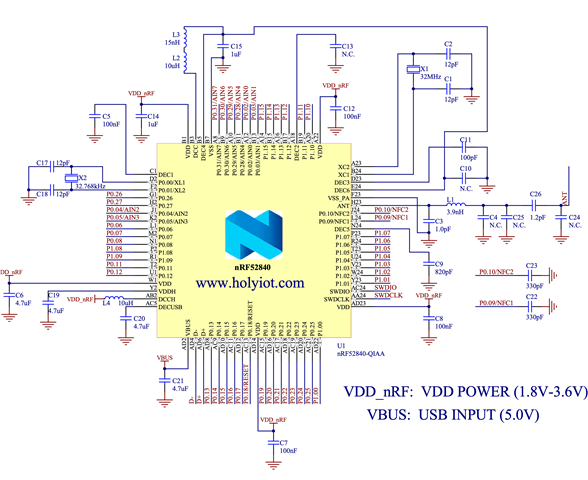Hello,
I have designed a keyboard around the nRF52840. The VDD is being used, not the VDDH. If the keyboard is attached to USB, VBUS is fed into a battery management IC and charges a LiPo battery, also goes into a LDO and the stabilized 3.3V VDD is fed to the nRF. If the keyboard is not connected to USB, it is powered through the battery management IC -> LDO -> VDD.
In order to shut off the keyboard and prevent draining the battery, I have a switch cutting the power path between the LDO and the VDD net.
My question: Is it OK to have the switch off and still have the device connected to USB, feeding power into the VBUS pin although there is no power going to the VDD pin? I am not concerned about eventual power consumption of the nRF52840 chip itself, only if this a supported or unsupported configuration.
Thanks for any responses and if I shall rather open a new thread with this question.
Michael.
PS: this is the schematic for one of the halves of the keyboard.



